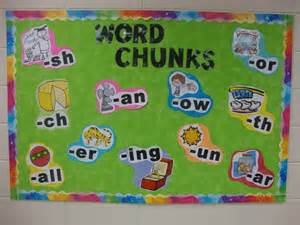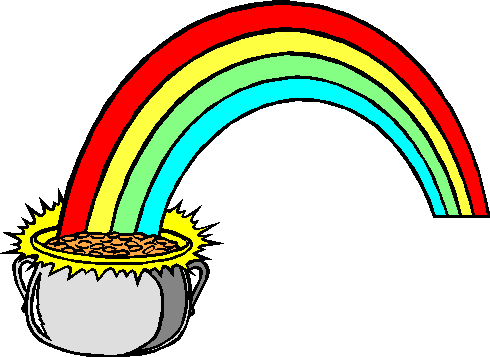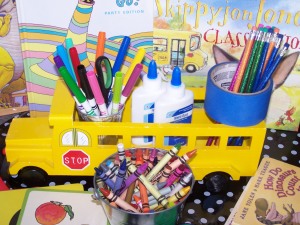Common
Core State Standards ELA Details
Reading Strategies
|
Predict (preview, set a
purpose)
|
Connect (personal
experiences, previous knowledge)
|
Visualize (events,
details)
|
|||||
Clarify (reread, any
questions)
|
Questions (look for
answers and reflect, ask 5 Ws-Answers who, what, when, where, why, how much,
or how many)
|
Evaluate (opinion/judgment,
summarize)
|
||||||
Multi-paragraph Composition
|
Introduction (background
information/summary, thesis, introduce details)
|
Body #1
(introduce detail #1, textual evidence-page number, explanation and
connection to thesis)
|
Body #2
(introduce detail #2, textual evidence-page number, explanation and
connection to thesis)
|
|||||
Body #3
(introduce detail #3, textual evidence-page number, explanation and
connection to thesis)
|
Conclusion
(Briefly restate details, explain connect to each other, state
overall connection to thesis)
|
|||||||
Elements of short Story
|
Setting
|
Characters (flat, round)
|
Plot (conflict=nature,
self, society, man)
|
Theme
|
||||
Poetic Forms
|
Haiku (3 lines, 5-7-9
syllables, image from nature, simile)
|
Sonnet (14 lines, ababcdcdefefgg rhyme scheme, 10
syllabus per line, 3 auqtrain-4 lines, 1 ccomples-2 lines)
|
Narrative (story,
generally long)
|
Dramatic (dialogue, 1
speaker)
|
Free-Verse (no rules)
|
|||
Figurative
Language
|
Metaphor
|
Simile
|
Personification
|
Hyperbole
|
||||
Themes of Love
|
Familia
|
Infatuation
|
Romantic
|
Platonic
|
||||
Novel
|
Elements (Character,
setting, plot, mood, theme)
|
Strategies for reading a novel
(read expressively, connect with characters, monitor your reading)
|
||||||
The CCSS Requires Three Shifts in ELA/Literacy
1.
Building knowledge through content-rich nonfiction
- Reading, writing and speaking grounded in evidence from text, both literary and informational
- Regular practice with complex text and its academic language
Text Structures
Structure
|
Description
|
Signal Words
|
|||||||
Sequence
|
Provides
a series of steps
|
· first
· second
· before
· on (date)
|
· not long after
· after that
· next
|
· at the same time
· finally
·
then
|
|||||
Description
|
Describes
something
|
· for example
· characteristics are
· for instance
· to begin with
· also
|
· in addition
· such as
· to illustrate
· most important
· another
|
· furthermore
· in front
· beside
· near
· about
· in fact
|
· is
· are
·
has
·
have
·
does
|
||||
Comparison
and Contrast
|
Compares and
contrasts the similarities and differences between two things
|
Contrast
item1
|
Compare
both
|
Contrast
item 2
|
|||||
·
different
·
from
·
in contrast
·
although
·
more than
·
less than
·
instead of
·
however
·
as well as
|
·
same as
• alike
• not only…but
also
• either…or
• likewise
• similarly
• similar to
• compared
with
|
· on
the other
hand
• on the
contrary
• as opposed
to
• but not
• while
•
unless
•
resemble
|
|||||||
Cause and
Effect
|
Presents
cause and effect relationships
|
· because
· if…then
· as a result
· therefore
· since
· consequently
|
· this leads to
· so that
· nevertheless
· accordingly
· because of
|
· in order to
· may be due to
· effects of
· thus
· for this reason
|
|||||
Problem and
Solution
|
Identifies
a problem and a solution to the problem
|
· the problem is
· the dilemma is
· the puzzle is
· the question is
· solve
|
· a solution
· question…answer
· one answer is
· one reason for the problem
|
||||||
Problem
and Solution
|
Identifies
a problem and a solution to the problem
|
Problem
|
Evidence
|
Possible
Solutions
|
Results
|
||||
·
because
·
since
·
the problem is
·
the puzzle is
·
the dilemma is
·
the question is
|
·
as a consequence
·
this led to
·
so that
·
nevertheless
·
accordingly
·
one reason for the
·
problem
|
· if
· so
· perhaps
· possibly
|
·
a solution is
·
solutions are
·
this resulted in
·
one answer is
·
therefore
|
||||||
Sentence Variety
Type
|
Definition
|
Conjunctions
|
||
Simple Sentence
|
A simple sentence is a sentence that has one independent clause (a
group of words that makes
a complete statement and has a subject and a verb).
(FORMULA: SV, SSV, SVV, SSVV) Subject verb
|
|||
Compound Sentences
(used
to coordinate two
complete thoughts)
|
A compound
sentence has two or more independent clauses (ICs). That means, it has two or
more complete sentences. The sentence is “compound” because it puts two sentences
together with a coordinating conjunction (CC), conjunctive adverb (CA), or
semicolon.
(FORMULA: I, CI or I;I)
|
*Coordinating
Conjunctions
for
and
nor
but
or
yet
so
(FANBOYS)
|
Conjunctive
Adverbs
therefore
additionally
similarly
however
consequently
likewise
besides
because
furthermore
meanwhile
otherwise
then
|
|
*Except for
very short sentences these conjunctions are always preceded by a comma.
|
||||
Complex Sentences
(used to add details
to their verbs)
|
A complex
sentence has one independent clause (IC) and one or more dependent clauses. A
dependent clause is a group of words with a subject and verb that cannot stand alone.
In a complex
sentence, the dependent clause is called an adverbial clause (AC). These
types of clauses begin with subordinating conjunctions (SC).
(FORMULA: D, I or ID)
|
Subordinating
Conjunctions
|
||
if
since
when
while
although
because
before
during
as long as
even if
even though
than
though
unless until
when
|
after
as
as if
as soon as
as though
whenever
even if
even though
in order that
just as
like
once
provided
rather than
so that
while
|
|||
Compound-Complex Sentences
(used to explain a
variety of ideas)
|
A
compound-complex sentence has one or more coordinated independent clauses and
one dependent clause or adverbial clause.
Put
a comma after the dependent clause if it begins the sentence.
Put
a comma before the and, but, or or that connects the
two independent clauses.
(FORMULA: D, I, c I or D, I; I or ID, c I or ID; I or I, c
ID or I; ID)
|
|||
Sentence Formulas at-a-Glance
Simple Sentence:
One Independent Clause
Four Sentence
Formulas
1)
SV (one
subject, one verb)
2)
SVV (one
subject, two verbs)
3)
SSV (two
subjects, one verb)
4)
SSVV (two
subjects, two verbs)
|
Compound Sentence:
Two Sentence
Formulas
1) I,cI (Independent Clause - comma -
coordinating Conjunction - Independent Clause)
2) I;I (Independent Clause - semicolon
- Independent Clause)
|
Complex Sentence:
Two Sentence Formulas
1)
D,I (Dependent
Clause-comma-Independent Clause)
2)
I dc D (Independent
Clause-dependent conjunction- Dependent Clause)
|
Compound-Complex Sentence:
Six Sentence
Formulas
1)
D,I,cI (Dependent
Clause-comma-Independent Clause-comma- coordinating Conjunction – Independent
Clause)
2)
D,I;I (Dependent
Clause-comma-Independent Clause-semicolon- Independent Clause)
3)
IdcD,cI (Independent
Clause-dependent conjunction- Dependent Clause-comma- coordinating
Conjunction - Independent Clause)
4)
IdcD;I (Independent Clause-dependent conjunction-
Dependent Clause -semicolon- Independent Clause)
5)
I,cIdcD (Independent Clause-comma-
coordinating Conjunction - Independent Clause- dependent conjunction-
Dependent Clause)
(6)
I;IdcD (Independent Clause-semicolon-
Independent Clause-dependent conjunction- Dependent Clause)
|
A clause is a word group used as a complete
sentence (Independent clause) or as an incomplete sentence/fragment =
Subordinate clause - aka: Dependent clause.
An independent clause is a group of words
that contains at least one subject and one verb and can stand alone. (It makes
a complete thought.)











